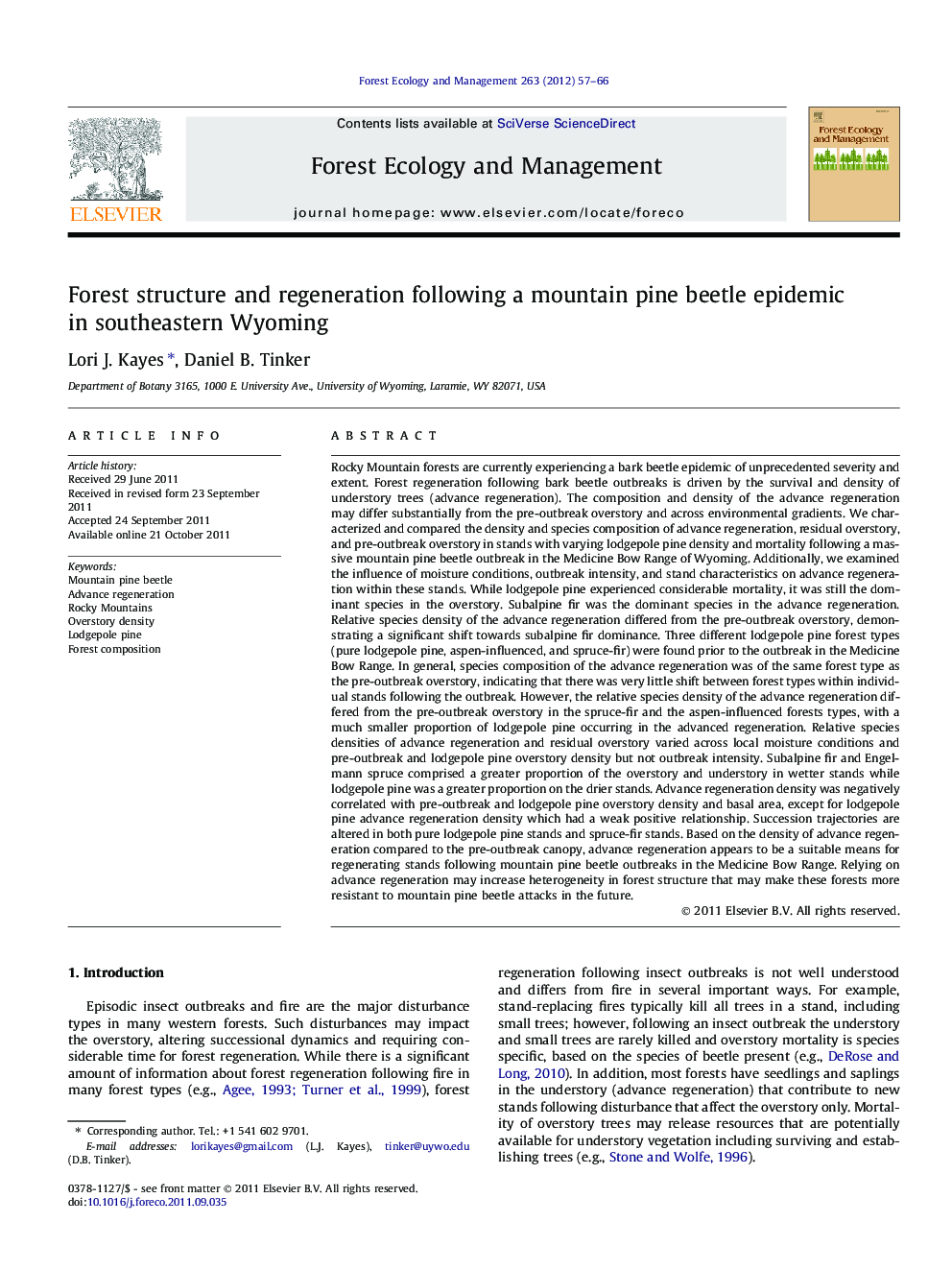| کد مقاله | کد نشریه | سال انتشار | مقاله انگلیسی | نسخه تمام متن |
|---|---|---|---|---|
| 87752 | 159265 | 2012 | 10 صفحه PDF | دانلود رایگان |

Rocky Mountain forests are currently experiencing a bark beetle epidemic of unprecedented severity and extent. Forest regeneration following bark beetle outbreaks is driven by the survival and density of understory trees (advance regeneration). The composition and density of the advance regeneration may differ substantially from the pre-outbreak overstory and across environmental gradients. We characterized and compared the density and species composition of advance regeneration, residual overstory, and pre-outbreak overstory in stands with varying lodgepole pine density and mortality following a massive mountain pine beetle outbreak in the Medicine Bow Range of Wyoming. Additionally, we examined the influence of moisture conditions, outbreak intensity, and stand characteristics on advance regeneration within these stands. While lodgepole pine experienced considerable mortality, it was still the dominant species in the overstory. Subalpine fir was the dominant species in the advance regeneration. Relative species density of the advance regeneration differed from the pre-outbreak overstory, demonstrating a significant shift towards subalpine fir dominance. Three different lodgepole pine forest types (pure lodgepole pine, aspen-influenced, and spruce-fir) were found prior to the outbreak in the Medicine Bow Range. In general, species composition of the advance regeneration was of the same forest type as the pre-outbreak overstory, indicating that there was very little shift between forest types within individual stands following the outbreak. However, the relative species density of the advance regeneration differed from the pre-outbreak overstory in the spruce-fir and the aspen-influenced forests types, with a much smaller proportion of lodgepole pine occurring in the advanced regeneration. Relative species densities of advance regeneration and residual overstory varied across local moisture conditions and pre-outbreak and lodgepole pine overstory density but not outbreak intensity. Subalpine fir and Engelmann spruce comprised a greater proportion of the overstory and understory in wetter stands while lodgepole pine was a greater proportion on the drier stands. Advance regeneration density was negatively correlated with pre-outbreak and lodgepole pine overstory density and basal area, except for lodgepole pine advance regeneration density which had a weak positive relationship. Succession trajectories are altered in both pure lodgepole pine stands and spruce-fir stands. Based on the density of advance regeneration compared to the pre-outbreak canopy, advance regeneration appears to be a suitable means for regenerating stands following mountain pine beetle outbreaks in the Medicine Bow Range. Relying on advance regeneration may increase heterogeneity in forest structure that may make these forests more resistant to mountain pine beetle attacks in the future.
► We compare live trees to pre-outbreak overstory following a mountain pine beetle outbreak.
► Even given mortality, the residual overstory was primarily lodgepole pine.
► All stands had advance regeneration, which was predominantly subalpine fir.
► Minimal change in forest type occurred within individual stands.
► Local moisture conditions and pre-outbreak overstory density impacted advance regeneration composition.
Journal: Forest Ecology and Management - Volume 263, 1 January 2012, Pages 57–66